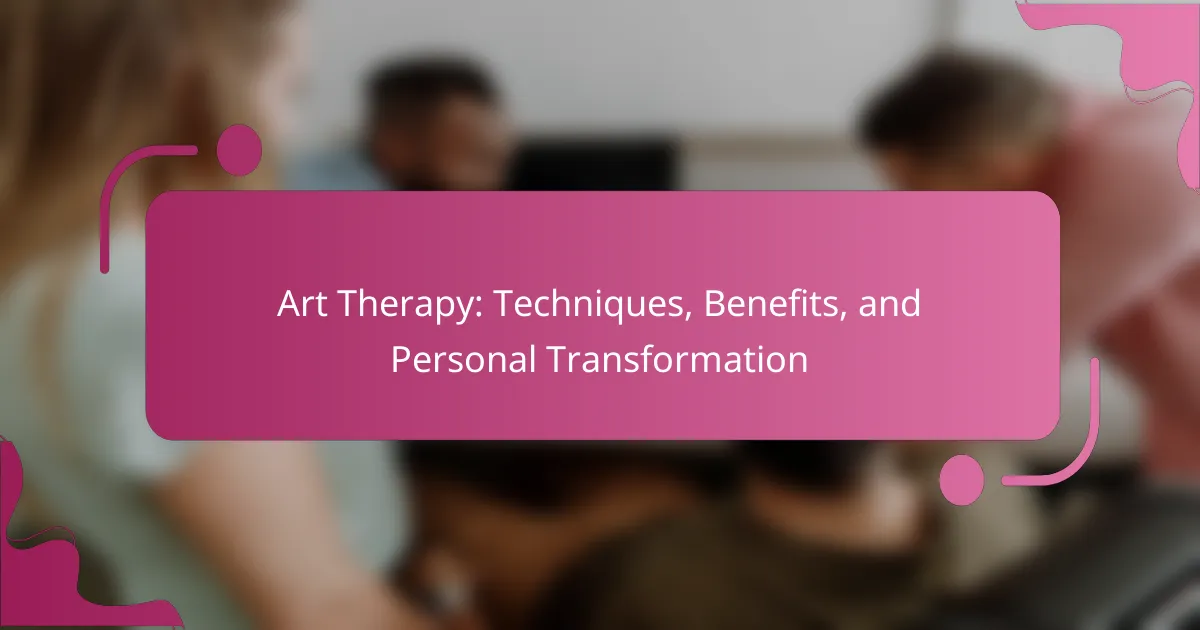Art therapy offers significant benefits for emotional healing and personal transformation. It utilises techniques like painting and sculpting to foster self-expression and reduce anxiety. This approach enhances self-awareness and can lead to improved mental well-being. Cultural variations and emerging trends in art therapy further enrich the therapeutic experience.
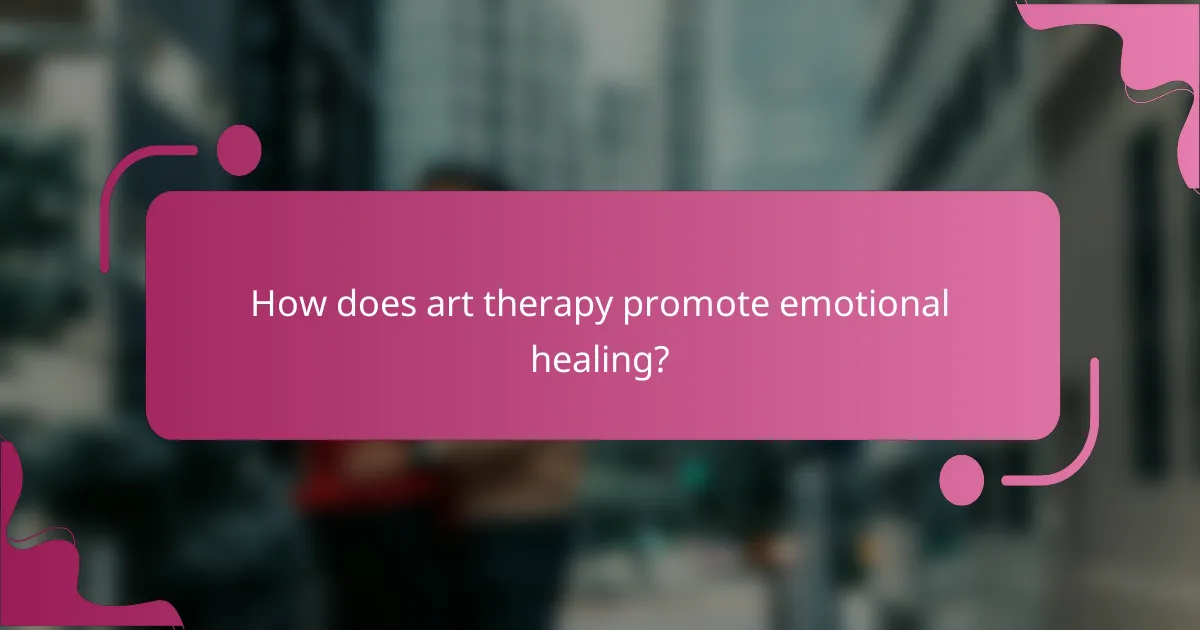
How does art therapy promote emotional healing?
Art therapy promotes emotional healing by facilitating self-expression and processing feelings. Through creative activities, individuals explore emotions, reduce anxiety, and enhance self-awareness. Techniques such as painting or sculpting help articulate complex feelings that may be difficult to verbalise. As a result, art therapy fosters personal transformation and emotional resilience, contributing to overall mental well-being.
What psychological principles underpin art therapy?
Art therapy is underpinned by psychological principles such as expression, catharsis, and symbolism. These principles facilitate emotional release, allowing individuals to explore and process feelings through creative activities. Art therapy leverages the concept of non-verbal communication, enabling clients to express complex emotions that may be difficult to articulate. Additionally, the therapeutic relationship fosters a safe environment, promoting trust and vulnerability, essential for personal transformation. Research indicates that art therapy can enhance self-esteem and reduce anxiety, demonstrating its effectiveness in various therapeutic contexts.
Which art mediums are most effective in therapy?
Art therapy utilises various mediums, each effective in promoting emotional healing. Visual arts, such as painting and drawing, allow for self-expression and exploration of feelings. Music therapy can enhance mood and facilitate communication. Dance and movement therapy engage the body, fostering physical and emotional release. Drama therapy encourages storytelling, helping individuals process experiences. Each medium uniquely supports personal transformation by addressing emotional needs and enhancing well-being.
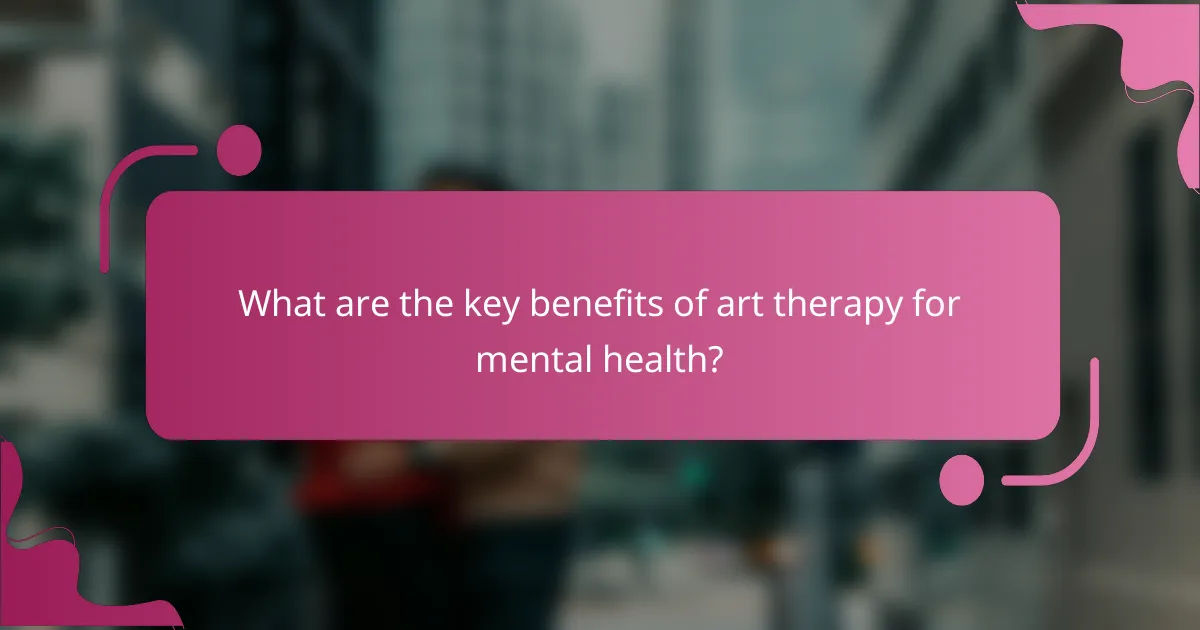
What are the key benefits of art therapy for mental health?
Art therapy significantly enhances mental health by fostering emotional expression, reducing anxiety, and improving self-esteem. Engaging in creative activities allows individuals to process feelings and experiences non-verbally. Research shows that art therapy can decrease symptoms of depression in 70% of participants. Additionally, it provides a unique platform for personal transformation, enabling individuals to explore their identities and cope with trauma. This therapeutic approach is particularly beneficial for those who find it difficult to articulate their emotions verbally.
How does art therapy aid in trauma recovery?
Art therapy aids in trauma recovery by providing a safe space for expression and healing. It helps individuals process emotions through creative activities, fostering self-discovery and resilience. Techniques include drawing, painting, and sculpting, which facilitate non-verbal communication of feelings. As a result, art therapy can reduce anxiety and improve emotional regulation, leading to personal transformation. Studies show that participants often experience enhanced self-esteem and a greater sense of control over their lives.
In what ways does art therapy improve self-esteem?
Art therapy improves self-esteem by fostering self-expression, enhancing emotional awareness, and promoting a sense of accomplishment. Engaging in creative activities allows individuals to explore their feelings and thoughts, which can lead to increased self-acceptance. As a result, participants often experience a boost in confidence. Additionally, the process of creating art provides a tangible representation of personal growth, reinforcing positive self-perception. Research indicates that art therapy can significantly contribute to overall mental well-being, making it a valuable tool for enhancing self-esteem.
What role does art therapy play in stress reduction?
Art therapy significantly aids in stress reduction by promoting emotional expression and relaxation. Techniques such as painting, drawing, and sculpting help individuals process feelings and reduce anxiety. Engaging in creative activities triggers the release of dopamine, enhancing mood and providing a sense of accomplishment. Studies indicate that participants in art therapy report lower stress levels and improved mental well-being. This therapeutic approach uniquely combines artistic expression with psychological healing, making it an effective tool for personal transformation.
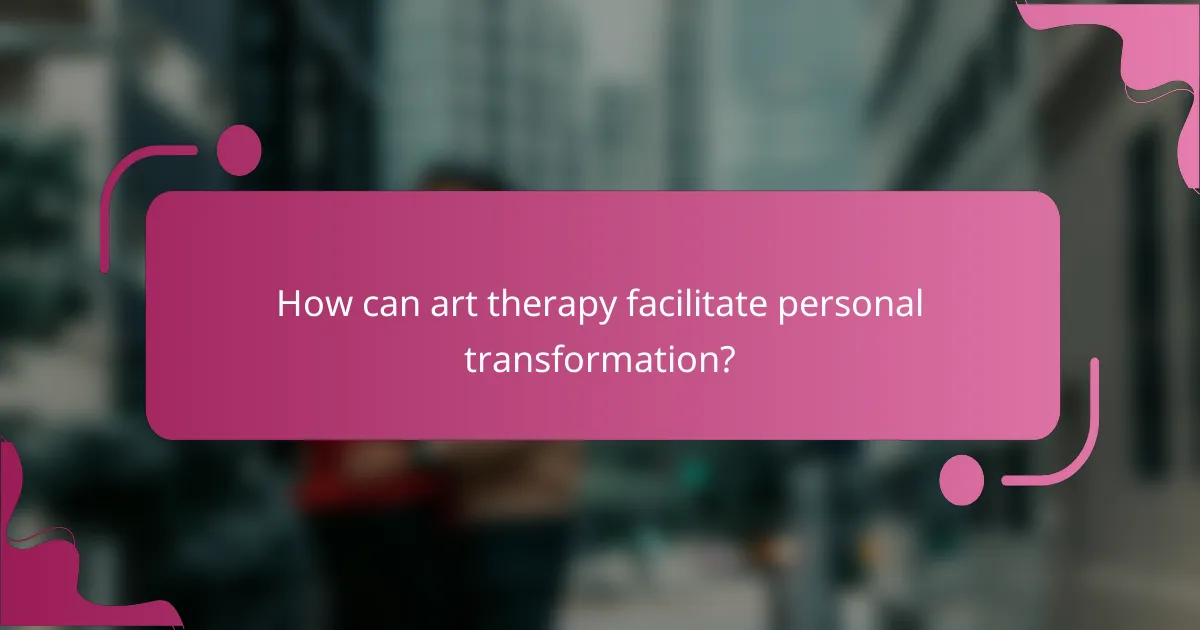
How can art therapy facilitate personal transformation?
Art therapy facilitates personal transformation by promoting self-expression and emotional healing. Techniques such as painting, drawing, and sculpting allow individuals to explore their feelings in a non-verbal way. This process can lead to increased self-awareness and insight, helping individuals confront and process trauma. Research indicates that engaging in art therapy can reduce anxiety and depression, enhancing overall well-being. As a result, participants often experience significant personal growth and improved coping skills.
What are the stages of personal growth through art therapy?
Art therapy typically progresses through several stages that facilitate personal growth. These stages include exploration, expression, reflection, and integration.
1. Exploration: Individuals begin by discovering their feelings and thoughts through various art materials.
2. Expression: Participants create art that represents their emotions, allowing for deeper self-expression.
3. Reflection: Clients analyse their artwork, gaining insights into their experiences and emotions.
4. Integration: The final stage involves incorporating the insights gained into everyday life, fostering personal transformation.
This structured approach helps individuals navigate their emotional landscapes and promotes healing through creative expression.
How does art therapy enhance self-awareness?
Art therapy enhances self-awareness by allowing individuals to express emotions creatively. This process fosters reflection and insight into personal experiences and feelings. Engaging in art-making can reveal subconscious thoughts, helping individuals understand their behaviours and motivations. As a result, participants often experience increased emotional regulation and improved self-acceptance.
Which success stories highlight transformation through art therapy?
Art therapy has transformed many lives, showcasing its profound impact on personal growth. Success stories often highlight individuals overcoming trauma, anxiety, and depression through creative expression. For example, a woman used painting to process her grief after losing a loved one, leading to emotional healing and renewed purpose. Similarly, a veteran found solace in sculpture, which helped him manage PTSD symptoms and reconnect with his identity. These narratives illustrate the unique ability of art therapy to facilitate emotional release and foster resilience, making it a powerful tool for transformation.
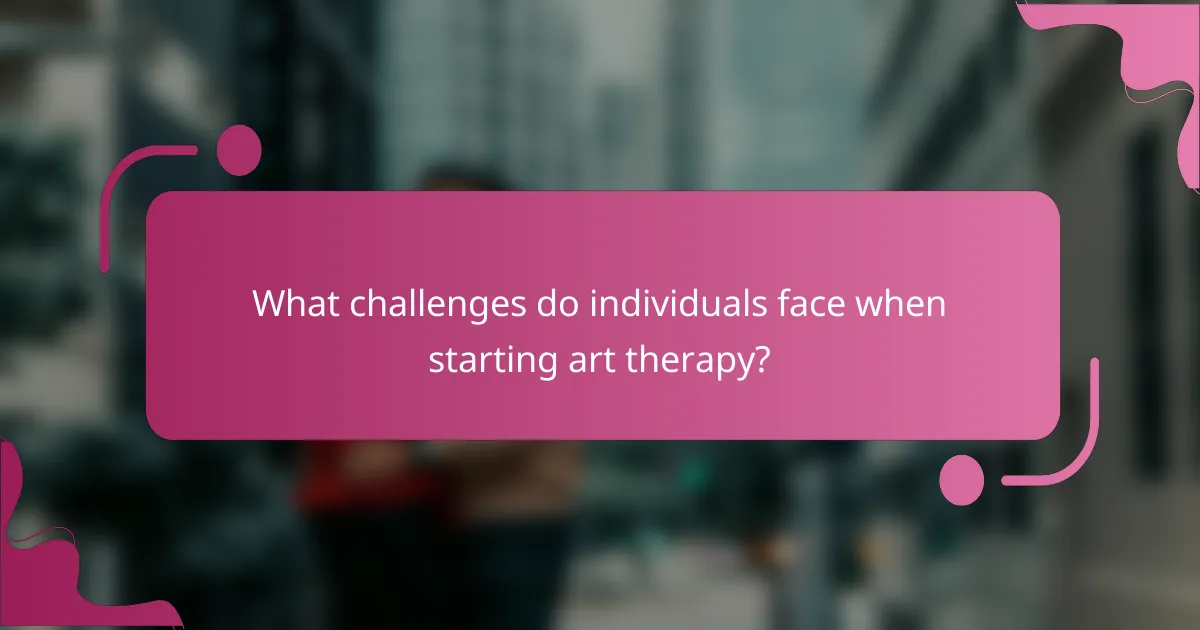
What challenges do individuals face when starting art therapy?
Individuals face several challenges when starting art therapy, including emotional resistance, lack of artistic skills, and uncertainty about the therapeutic process. Emotional resistance can stem from fear of vulnerability or past trauma. Many individuals worry about their artistic abilities, feeling inadequate to express themselves creatively. Additionally, the unfamiliarity with therapeutic practices can create anxiety, leading to hesitation in fully engaging with the process. These challenges can hinder personal transformation and the overall effectiveness of art therapy.
How can resistance to art therapy be overcome?
Resistance to art therapy can be overcome through trust-building, gradual exposure, and personalised approaches. Establishing a safe environment encourages clients to express themselves. Incorporating familiar materials can ease anxiety. Tailoring sessions to individual interests fosters engagement and motivation. Encouragement and positive reinforcement can enhance willingness to participate.
What common misconceptions exist about art therapy?
Many misconceptions about art therapy suggest it is solely about creating art. In reality, it involves therapeutic techniques that promote healing and personal growth. Some believe art therapy is only for those with artistic talent, but it is accessible to everyone. Others think it is a quick fix for emotional issues, while it actually requires time and commitment. Additionally, some view it as an unscientific practice, but research supports its effectiveness in various mental health contexts.
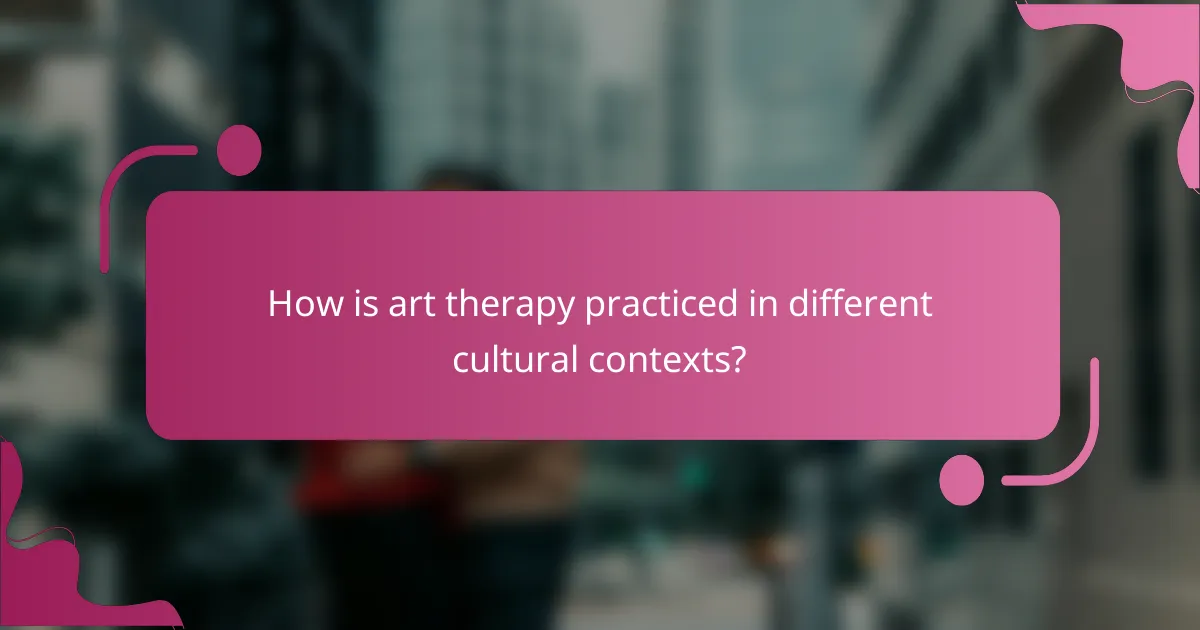
How is art therapy practiced in different cultural contexts?
Art therapy is practiced differently across cultures, reflecting unique values and beliefs. Techniques often incorporate traditional art forms, local materials, and culturally specific themes. For example, Indigenous communities may utilise storytelling through art, while Western approaches often emphasise personal expression and psychological insights.
In some Asian cultures, art therapy may focus on collective experiences and harmony, using group sessions to foster community support. The benefits of art therapy, such as emotional healing and self-discovery, are universally recognised, yet the methods and cultural context shape the experience.
Personal transformation through art therapy varies, as individuals connect with their cultural heritage and identity. This connection can enhance the therapeutic process, making it more meaningful and effective. Overall, art therapy’s adaptability allows it to resonate deeply within diverse cultural frameworks.
Which cultural adaptations enhance the effectiveness of art therapy?
Cultural adaptations that enhance the effectiveness of art therapy include incorporating local artistic traditions, understanding cultural symbolism, and adapting therapeutic approaches to align with community values. These adaptations foster trust and engagement, ultimately leading to more profound personal transformation. For example, using indigenous art forms can resonate deeply with clients, allowing for authentic expression. Additionally, recognising cultural narratives can facilitate healing by connecting individuals to their heritage. Emphasising community involvement in art therapy programmes also enhances their relevance and effectiveness.
How do societal perceptions of art therapy vary globally?
Societal perceptions of art therapy vary significantly across cultures. In Western countries, it is often recognised as a legitimate therapeutic practice, emphasising emotional healing and personal expression. In contrast, some non-Western cultures might view art therapy with scepticism, associating it more with leisure than serious mental health treatment. The acceptance of art therapy can also depend on factors such as education, mental health awareness, and historical context. For instance, societies with strong stigma around mental health may be less open to art therapy. Understanding these differences is crucial for practitioners working in diverse environments.
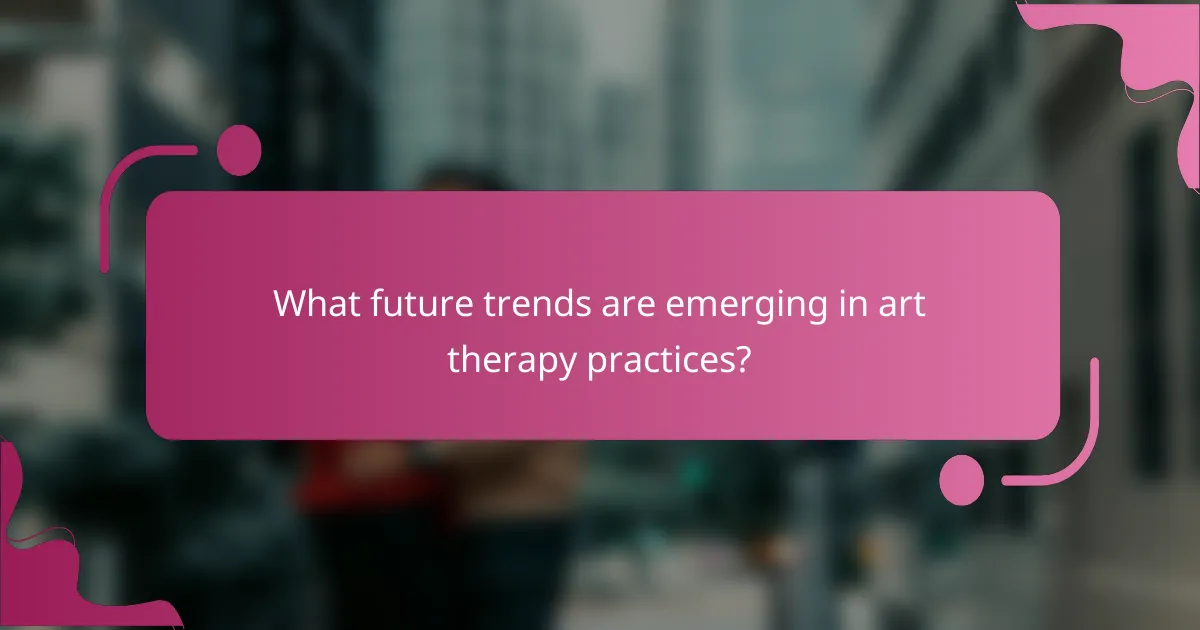
What future trends are emerging in art therapy practices?
Emerging trends in art therapy include digital integration, trauma-informed approaches, and community-based practices. Therapists increasingly utilise technology, such as virtual reality and online platforms, to enhance accessibility and engagement. Trauma-informed techniques focus on creating safe spaces for healing, recognising the impact of trauma on the creative process. Community-based practices foster social connections and collective healing, emphasising the power of shared experiences in art therapy.
How is technology influencing art therapy techniques?
Technology significantly enhances art therapy techniques by introducing innovative tools and methods. Digital platforms enable remote sessions, expanding access for clients. Virtual reality immerses individuals in therapeutic environments, fostering deeper emotional connections. Mobile applications provide guided exercises and track progress, making therapy more engaging. Additionally, social media facilitates community support, allowing shared experiences and encouragement among participants. These advancements contribute to more personalised and effective therapeutic outcomes.
What innovations are shaping the future of art therapy?
Innovations in art therapy include digital tools, virtual reality experiences, and neuroscience integration. These advancements enhance accessibility and effectiveness. For instance, digital platforms allow remote therapy sessions, broadening reach. Virtual reality immerses clients in therapeutic environments, promoting engagement. Neuroscience insights inform techniques, optimising emotional processing and healing.
What best practices should be followed for effective art therapy?
Effective art therapy requires a structured approach to maximise its benefits. Focus on creating a safe environment, encouraging self-expression, and utilising diverse techniques.
1. Establish a safe space for participants to express emotions freely.
2. Use varied art materials to cater to different preferences and enhance creativity.
3. Encourage personal storytelling through art to facilitate deeper emotional connections.
4. Incorporate guided sessions that focus on specific themes or emotions.
5. Foster a non-judgmental atmosphere to promote openness and trust.
6. Regularly evaluate progress and adapt techniques to individual needs.
